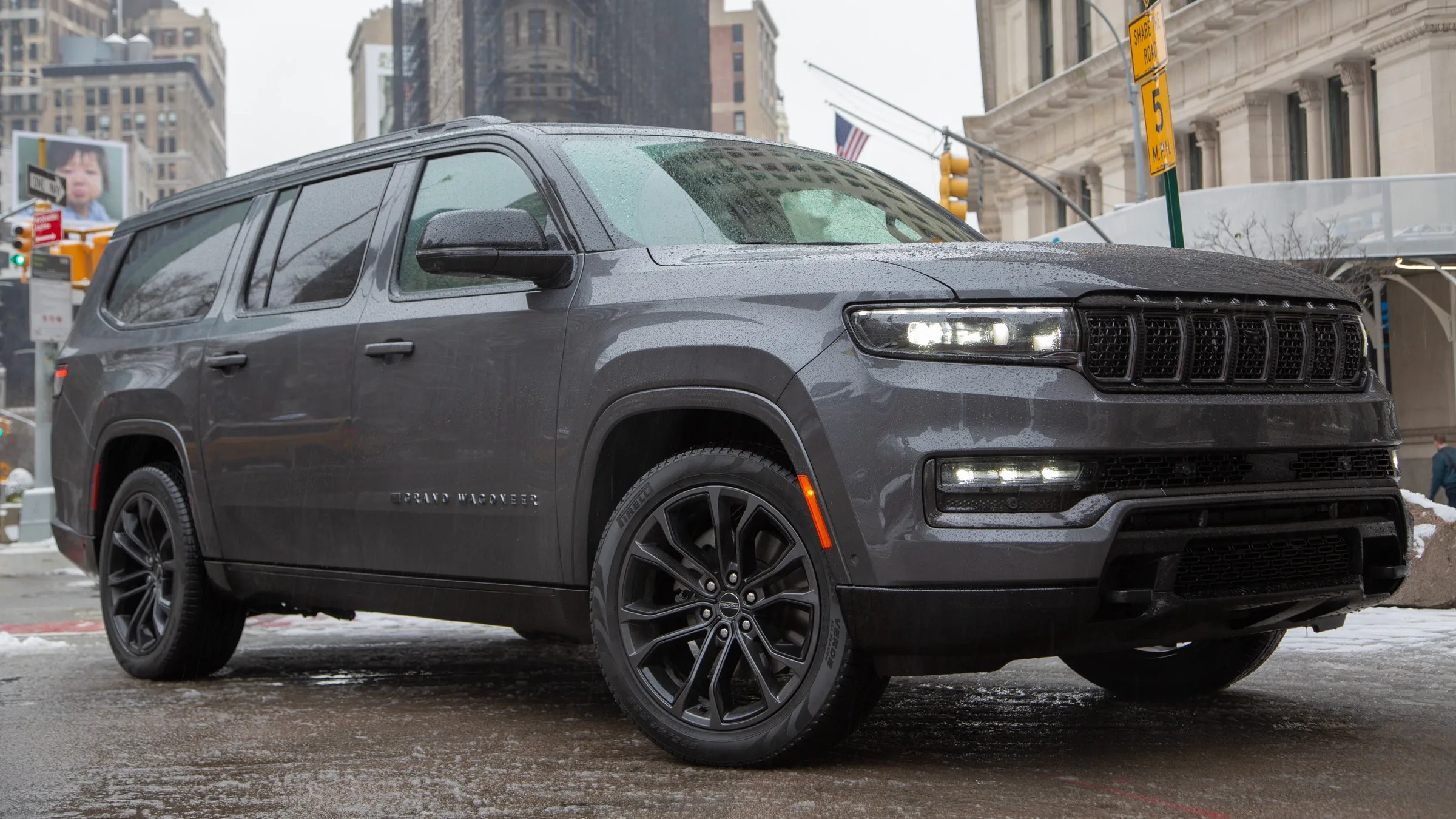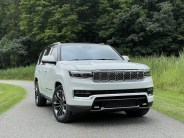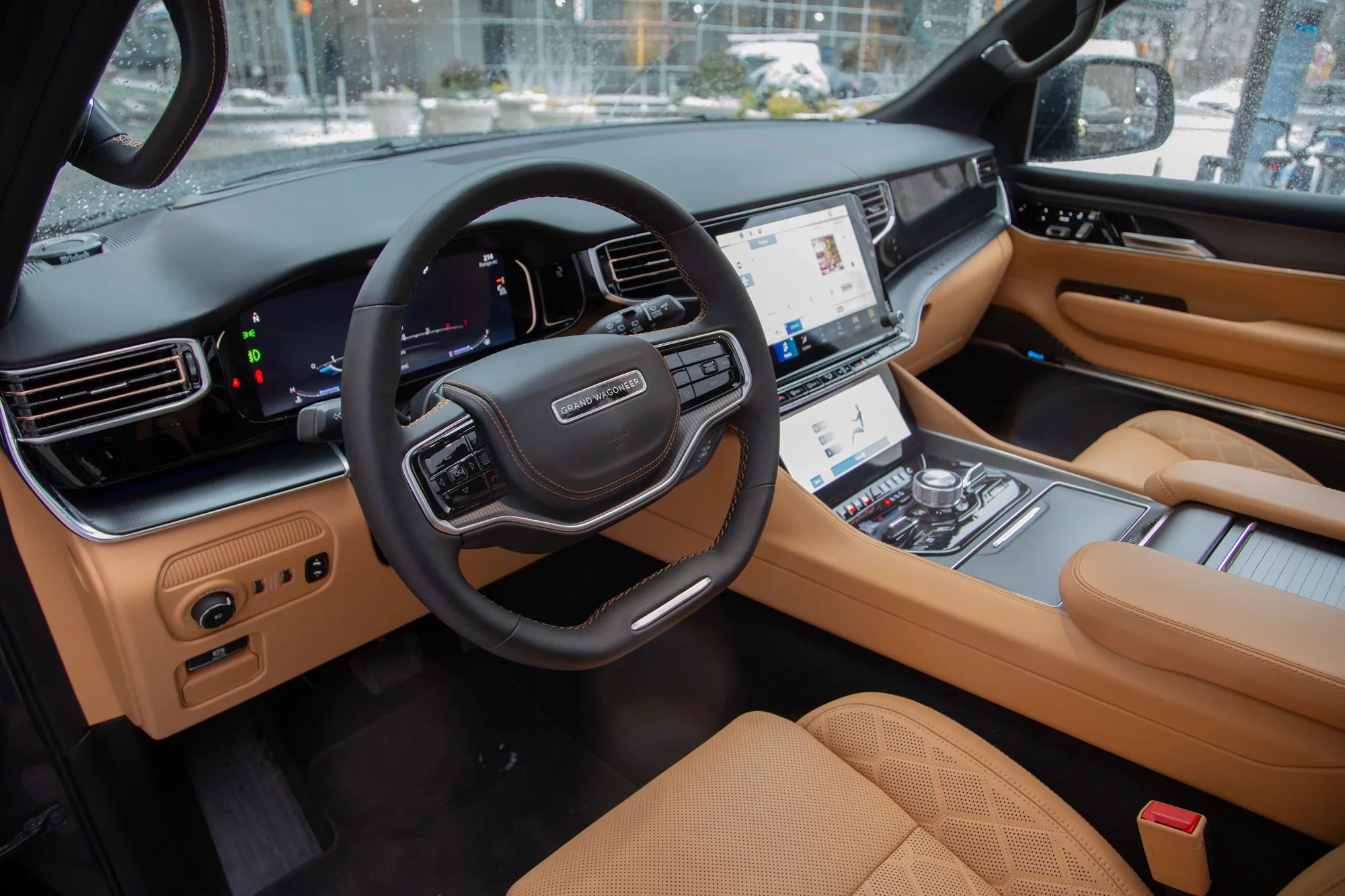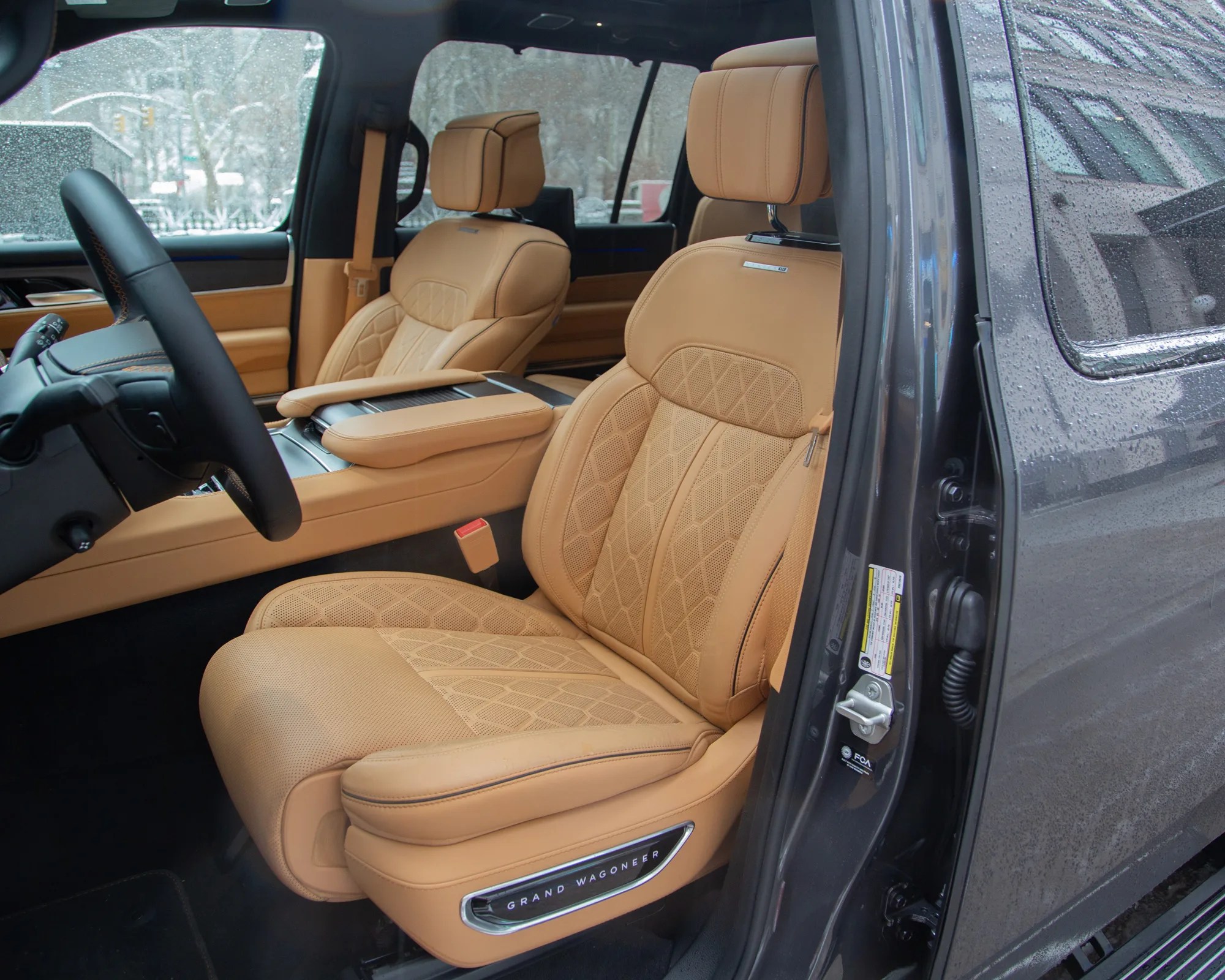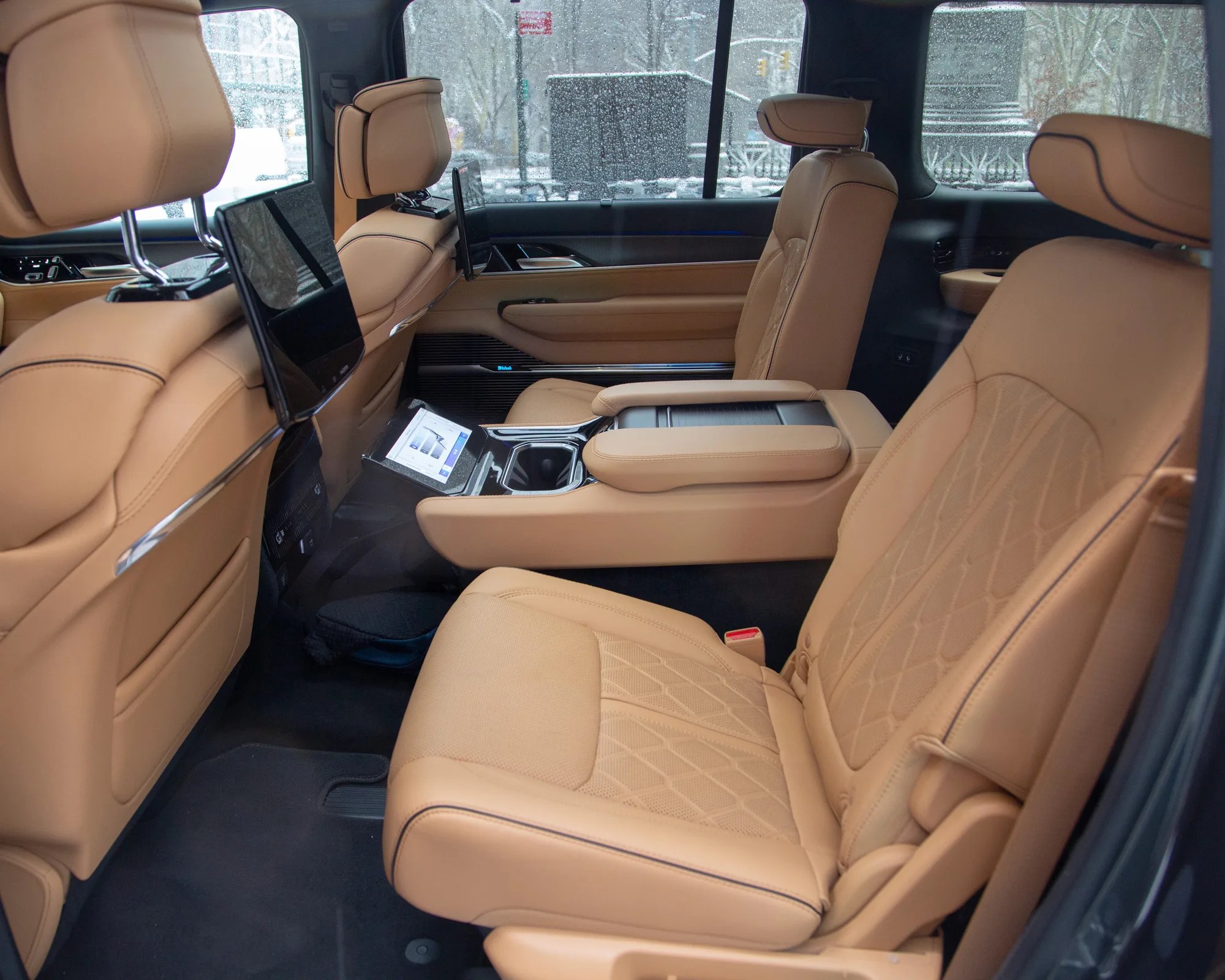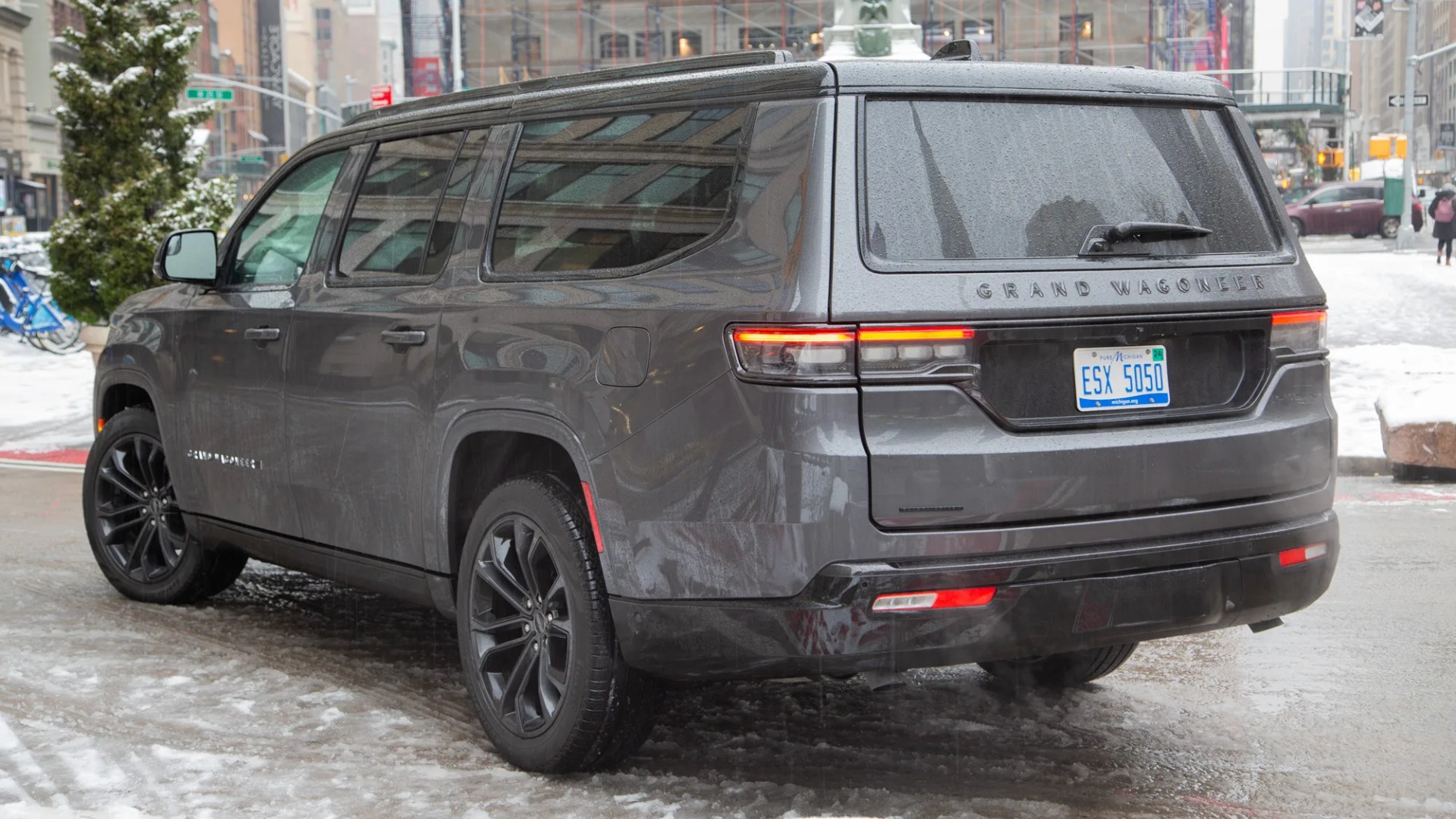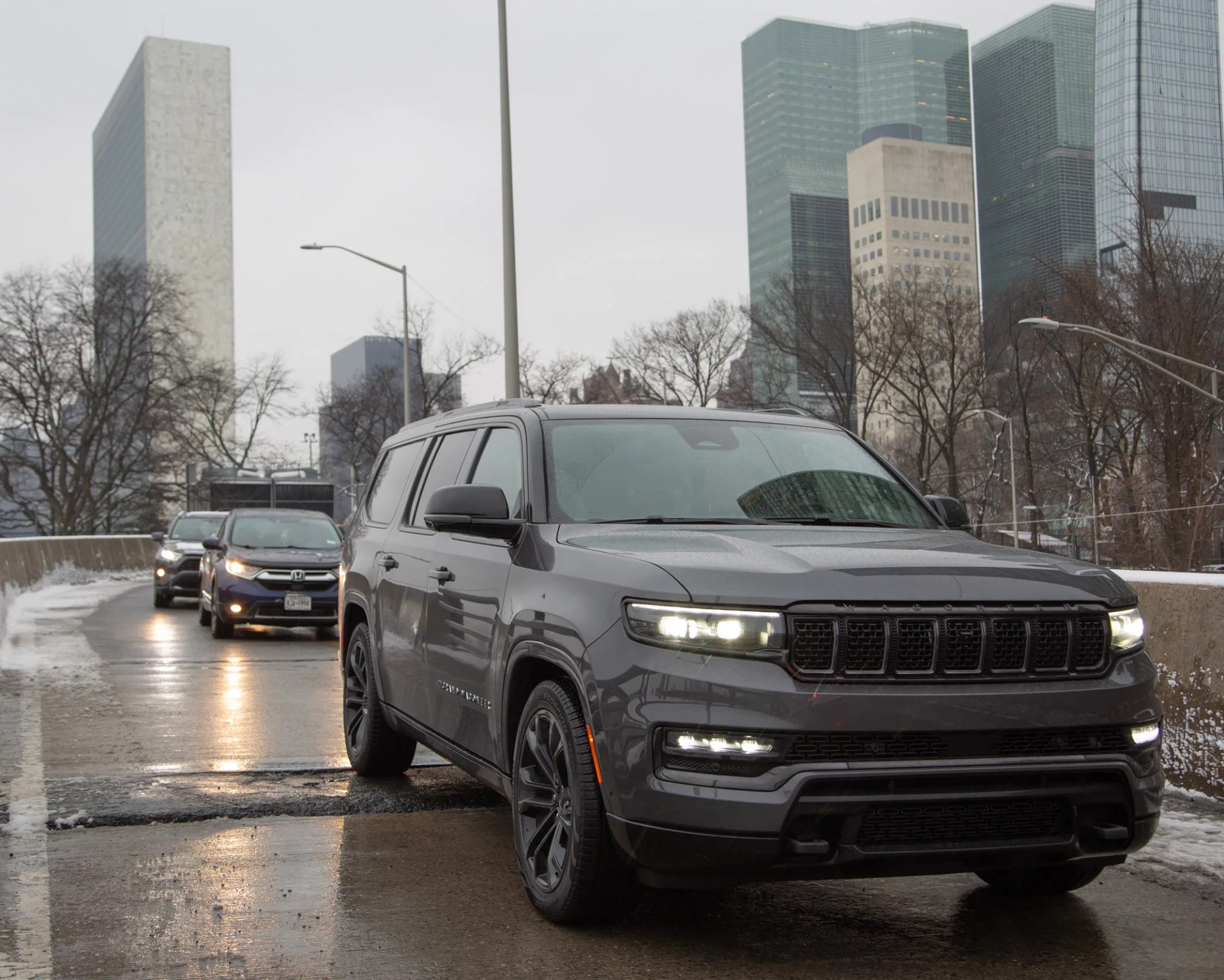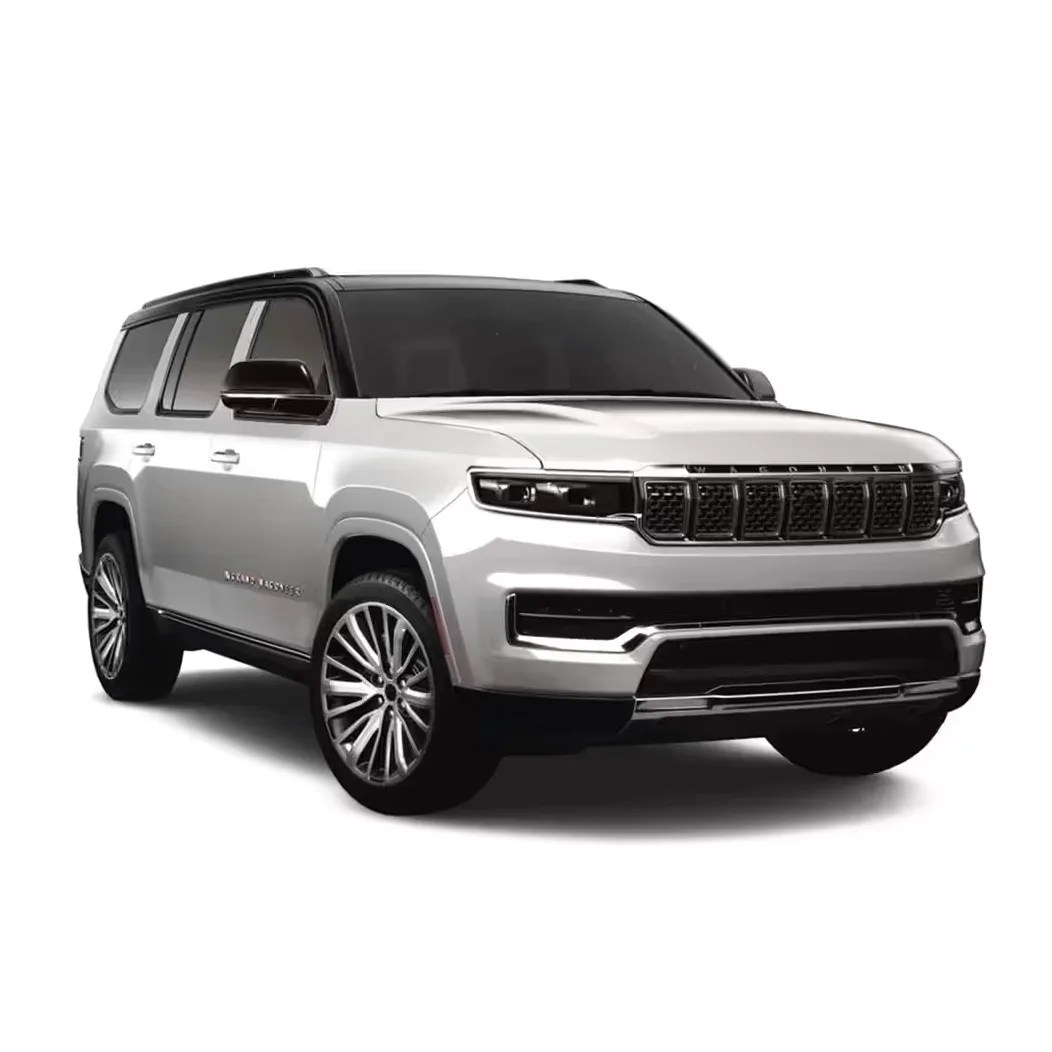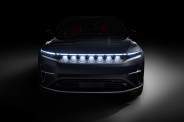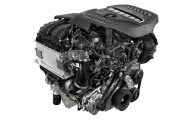The new Grand Wagoneer had a very big reputation to live up to when it arrived in 2021. After all, the original Wagoneer was one of the first full-size SUVs, following only the Chevrolet Suburban. Over the course of its decades-long run, that first-gen Wagoneer code-named SJ became an American icon … especially in the wood-paneled form of the original Grand Wagoneer.
The new model has held up its predecessor’s reputation, bringing traditional Jeep virtues to the full-size body-on-frame SUV class so long dominated by the Ford Expedition / Lincoln Navigator and the Chevy Tahoe/Suburban / GMC Yukon/Yukon XL / Cadillac Escalade triplets-slash-quintuplets. But for the 2024 model year, Jeep rolled out a pair of changes that are a good bit larger than a carmaker usually adds to the mix just a year or two into a model’s life: a new body style and a new engine.
The bonus body style brings an added seven inches to the wheelbase, eight inches to the overall length and — most relevant for buyers an extra 15.8 cubic feet to the interior behind the third row of seats. It’s the new engine that’s more likely to inspire curiosity amongst potential buyers, however. The latest Wagoneer and Grand Wagoneer have officially seen off the 5.7-liter and 6.4-liter V8s that the vehicles launched with in favor of Stellantis’s new turbocharged inline-six, known internally as “Hurricane.” Displacement may be down — at 3.0 liters, the new engine is less than half the size of the previous Grand Wagoneer motor — but power is up, with the SUV now pumping out 510 horsepower and 500 lb-ft of torque.
So do these tweaks change the Grand Wagoneer for better or worse, or do they amount to a hill of beans? I took a fresh ’24 model year version for a brief spin in and around New York City and its ‘burbs — which, adventurous image aside, is the kind of place many of its kind will live their lives — to find out.
The 2024 Jeep Grand Wagoneer L: What We Think
The longer wheelbase brings added versatility to the Grand Wagoneer. Assuming you’re able to squeeze it into your life — your garage, your neighborhood parking spaces, your regional tunnels and underpasses — going with the expanded length version seem well worth the outlay of cash for the bonus capability it brings to an already incredibly capable vehicle.
That said, the new inline-six is less obvious in its appeal. Fuel economy would seem to be the clear reason, but it only edges up 1 mpg for city driving and 2 mpg on the highway in the EPA’s ratings. While it’s smooth, it lacks the V8’s immediacy and punch in everyday driving, at least unless you fiddle with the drive modes every time you climb inside — something many buyers would presumably be irritated about or simply forget to do.
And as a broader note about the Grand Wagoneer regardless of length: unlike the Jeep’s cross-town rivals from GM and FoMoCo, the luxury version looks just like the mainstream one, undermining its premium appeal. For the $115,000 price tag of my tester, I’d go for the Cadillac Escalade or Lincoln Navigator. The Grand Wagoneer is a good vehicle, to be sure, but by offering identical looks and a still-impressive suite of features for tens of thousands of dollars less, the regular Wagoneer feels like a better value and a better representation of the breed.
